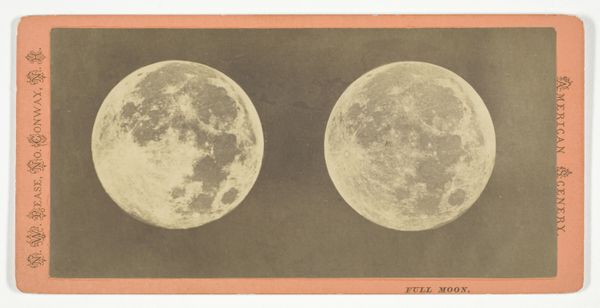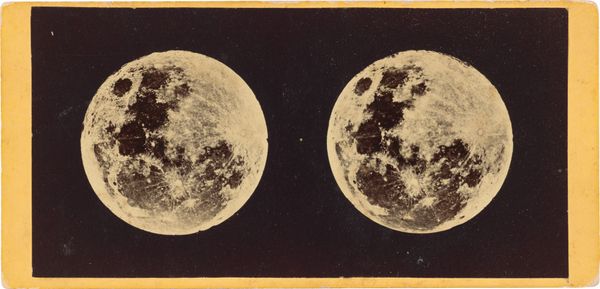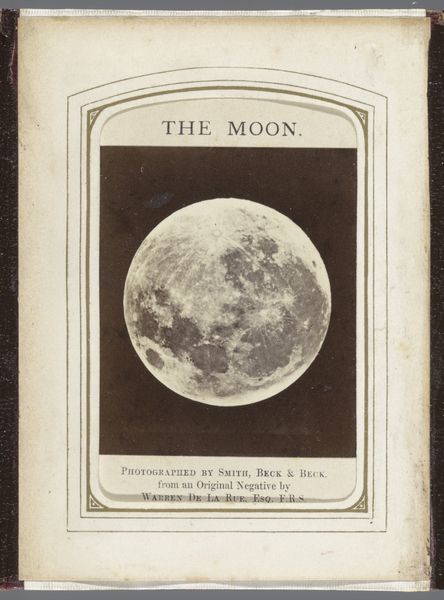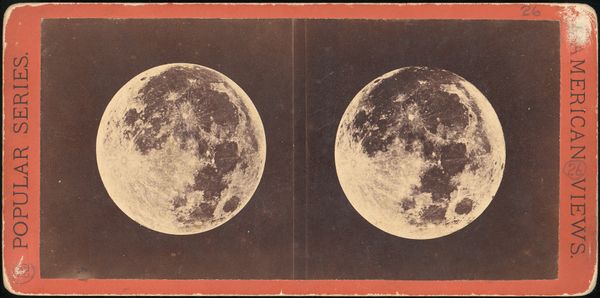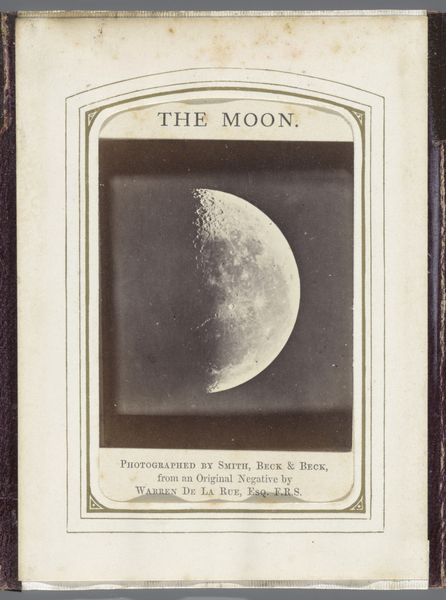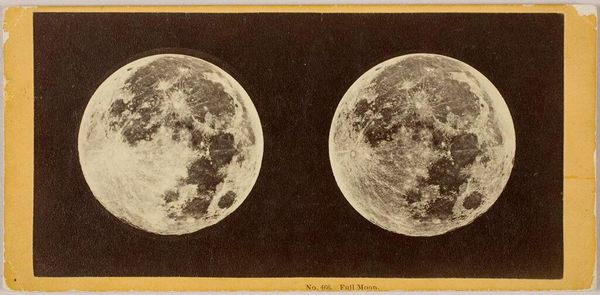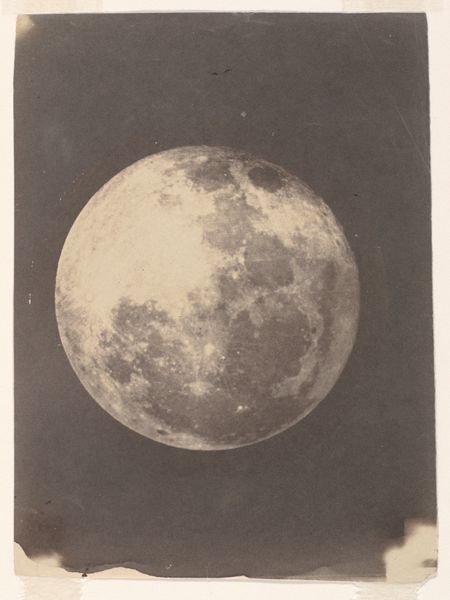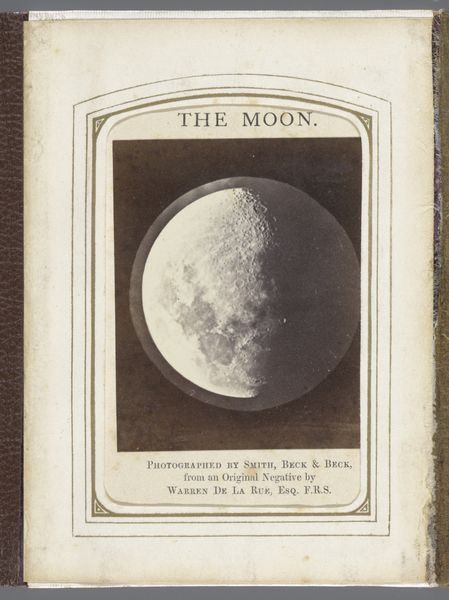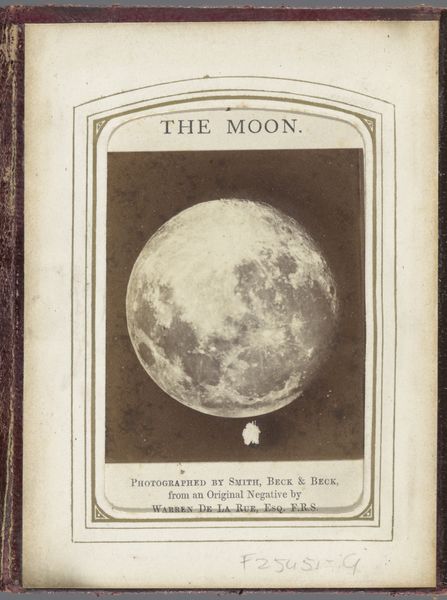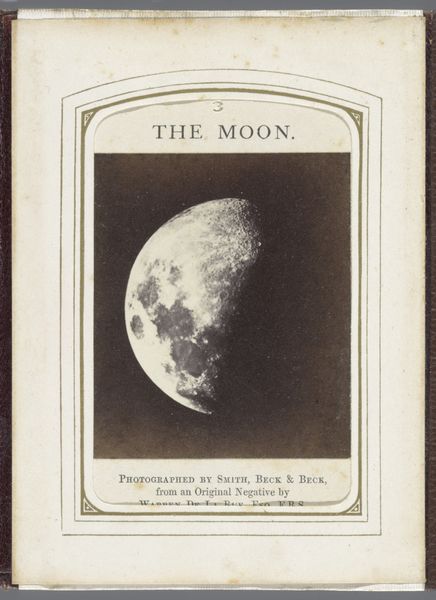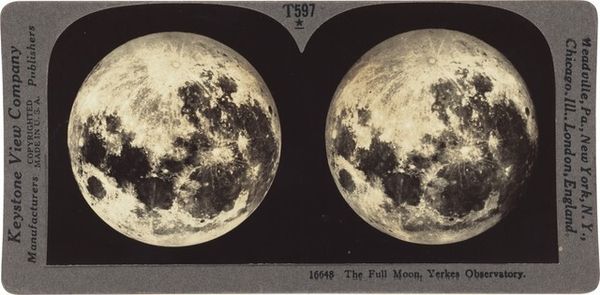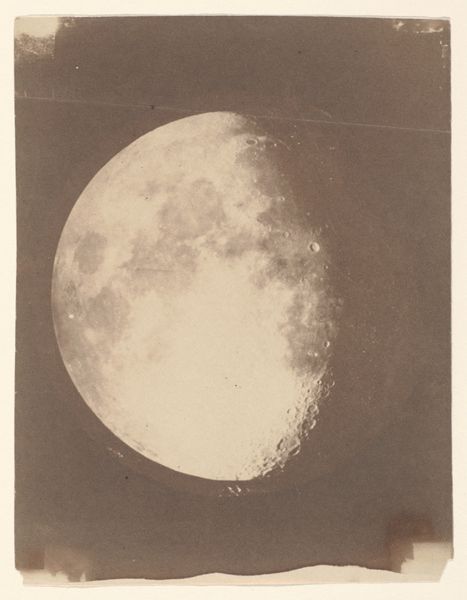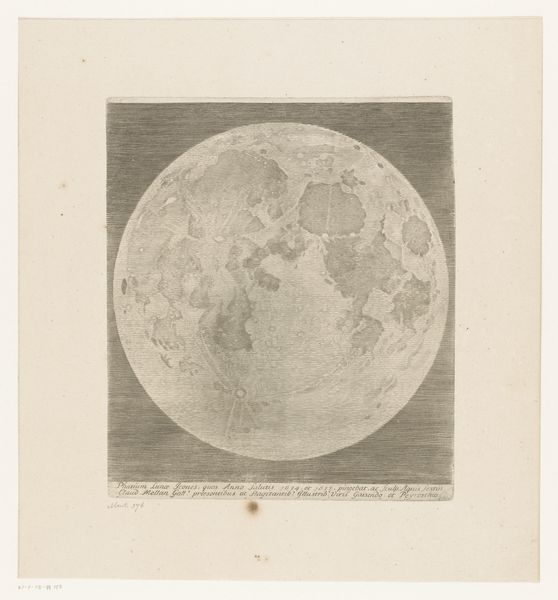
Dimensions: image/sheet: 7.9 × 14.8 cm (3 1/8 × 5 13/16 in.) mount: 8.8 × 17.8 cm (3 7/16 × 7 in.)
Copyright: National Gallery of Art: CC0 1.0
Curator: Here we have Henry Draper's "Full Moon," a stereoscopic daguerreotype dating back to 1860. Editor: The stark contrast is immediately arresting. There's a certain weightiness in its presentation, given the photographic printing technique. It appears incredibly precise. Curator: Indeed. Draper, a physician and avid astronomer, created this from negatives taken with his own silvered glass telescope. It’s really a marriage of scientific pursuit and artistic endeavor. You can observe it was published by C. Bierstadt in Niagara Falls. Editor: That makes me wonder, was this purely a scientific document, or was there also a romantic, perhaps even nationalistic, agenda in presenting this image to the public at the time? This object invites mass spectatorship because it is sold only by Underwood and Underwood in places such as Liverpool, New York, and Chicago. Who was this art intended for? Curator: Considering the rise of photography in the mid-19th century, such images played a role in shaping public perception. The sheer clarity was likely remarkable to contemporary viewers, democratizing astronomical observation. Note the cratering; he has somehow successfully documented such an intimate aspect. Editor: Exactly! It signifies a new kind of experience that has both technological innovation and artistic value. I'm curious about the implications that an American publisher made these images for international distribution. It also strikes me—is that a stereoscope card? Curator: Precisely. That accounts for the double image—designed for viewing through a stereoscope, to enhance the three-dimensionality. This enabled a sense of possessing this vista through the magic of technology. Editor: So, viewers could simulate the feeling of gazing at the moon up close. Curator: Effectively, yes. It’s both an aesthetic object and a portal, transporting viewers to a new realm, however virtually. What begins with careful technical precision opens up towards a democratization of landscape viewing and experience through its presentation and accessible price. Editor: Examining the interplay between form and context highlights its multifaceted nature. Thank you for elucidating my appreciation of Draper’s captivating daguerreotype. Curator: My pleasure. Viewing it through a Formalist lens initially underscores the composition. When we view the daguerrotype via its complex relationship with the social implications, such as scientific communication, mass spectacle, or cultural and aesthetic creation, new connections will be uncovered.
Comments
No comments
Be the first to comment and join the conversation on the ultimate creative platform.
